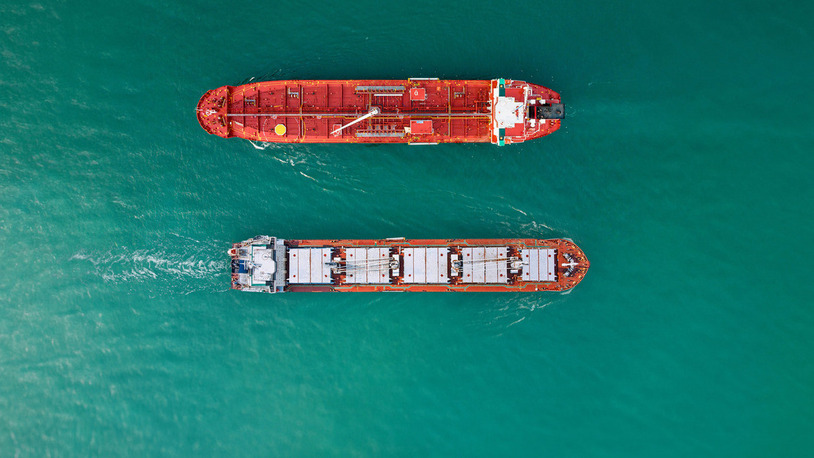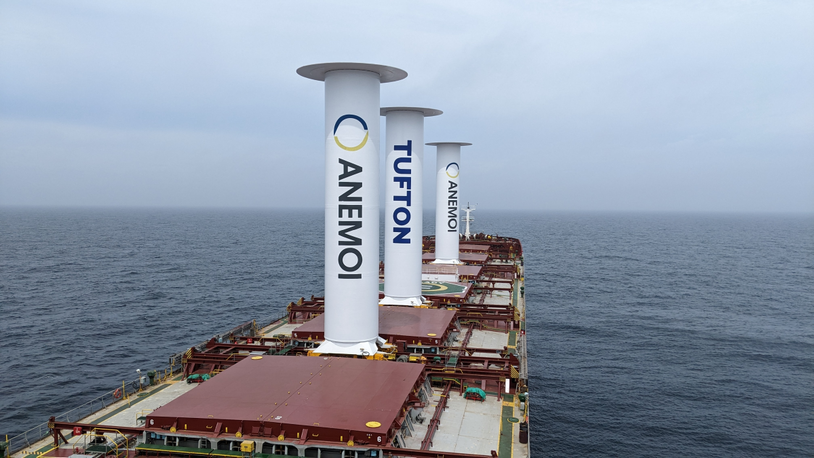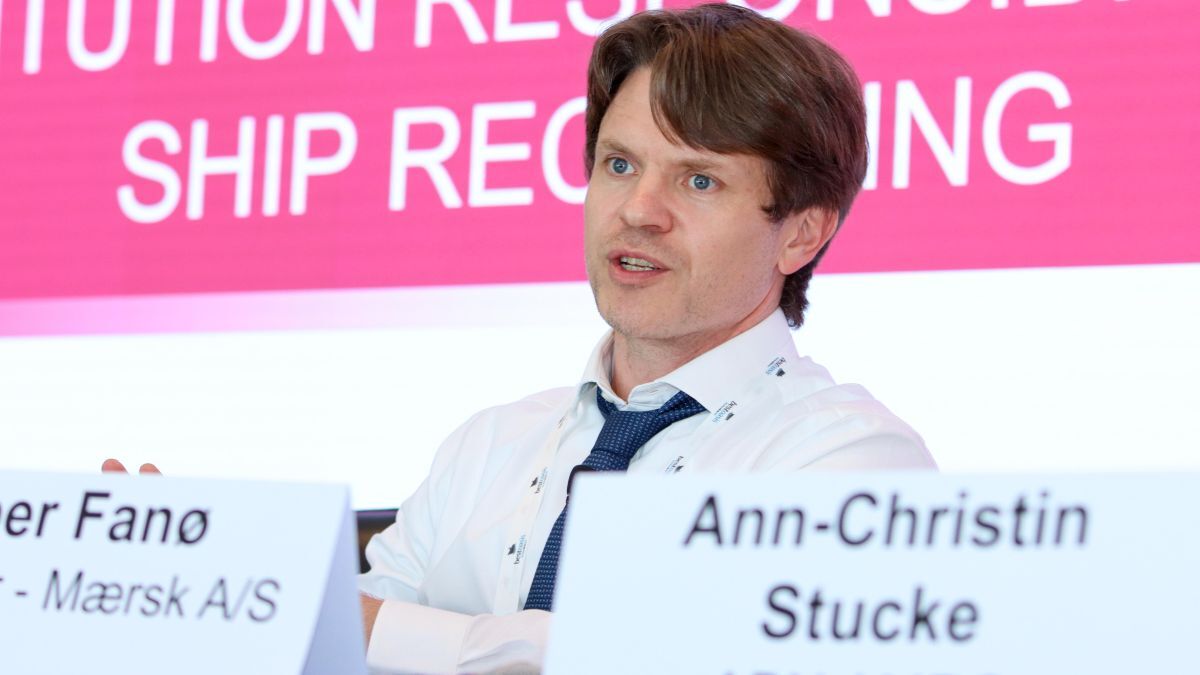Business Sectors
Contents
Asia backs LNG bunkering technology
Just seven years ago many diesel engine makers, heavy fuel oil (HFO) providers and lube oil suppliers feared for their livelihoods. As IMO hinted that it might one day allow only low sulphur fuel to be used on ships, the then director of environment and sustainability at one oil company told a conference that such a move would mean that the marine diesel engine would eventually be replaced by gas turbines and the managing director of another oil company predicted “the start of a long goodbye” for marine lubes in that scenario.
That has clearly not happened. Engineers rose to the challenge laid down by regulators and global support for alternative fuels to HFO is growing. Much has been written and said about the options available; in the main, LNG, but also LPG, methanol, ethanol and biofuels can be counted as serious options. In addition, renewable energy, such as wind and solar power, are being explored in some quarters, while nuclear power must be viewed as a longer-term option.
But this issue of Future Marine Fuels & Lubes is focusing on the Asia region. How does this part of the world shape up when it comes to being prepared for these challenges?
In South Korea, the Korean Register (KR) – an International Association of Classification Societies (IACS) member – is tooling up to be ready for the imminent era when low-sulphur emissions are enforced. Although there are currently no emission control areas (ECAs) in Asia, there is a trend towards them being established in the medium term in line with IMO’s greenhouse gas reduction initiatives.
This same driver is credited for KR’s ambitious project to create what it believes will be the world’s first green-ship equipment certification centre. Once it opens in February 2014, it will enable KR to lead the way in certifying essential green-ship components, including engines, the organisation said in a statement.
The new facility is being built in Gunsan, in South Korea’s western Jeonbuk region, where Won 300 billion (US$270 million) is being invested with support from the Korean Ministry of Maritime Affairs and Fisheries, the local government and various research institutes.
It will have an 8MW test engine, hybrid power systems, a fuel quality and emissions testing bench and other facilities, including an organic Rankine cycle (ORC) system. An ORC provides a means of obtaining energy from relatively low temperature sources, such as biomass and exhaust gases.
KR reported that the centre is attracting significant interest from major shipyards and predicted that it will establish the organisation and its industry and academic partners as a leading authority on maritime technology that is designed to lessen environmental impact.
South Korea is also considering establishing an LNG bunkering infrastructure. Earlier this year, a feasibility study began, headed by Korea Gas Corp (Kogas). It has formed two consortia with the country’s major energy companies – with Kyungnam Energy Co in the south-eastern area and with Samchully in the western area – and has contracted DNV to carry out the study itself. It is, said DNV in a statement in January, “One of the largest and most comprehensive feasibility studies ever initiated in the worldwide LNG
bunkering industry.”
South Korea is not alone in conducting such investigations. Elsewhere in this publication China’s initiatives are described, including some of the experimental work that is being done with vessels operating on the Yangtze and plans to establish an LNG bunkering terminal near the river’s mouth.
The potential scale of this operation was made clear in a report in the Financial Times last November, which quoted a source in China National Offshore Oil Corp’s Gas and Power subsidiary as saying that the corporation plans to provide sufficient LNG bunkering facilities for 80,000 river vessels, in particular sand carriers, and that these will include a bunker tanker as a mobile refuelling station.
One of the difficulties that is often cited as a stumbling block to widespread use of LNG as fuel is its availability and the chicken-and-egg conundrum: until there is demand, why invest in supply facilities; until there are supply facilities, its use will be restricted to ships on fixed routes where dedicated supplies can be provided.
Singapore and Japan are considering establishing ECAs, but that will create a need for suitable bunker supplies. A joint industry project (JIP) in Singapore last year involved 21 partners and was sponsored by the Maritime and Port Authority of Singapore (MPA) to look at the feasibility of providing LNG fuel at the world’s largest bunkering port.
More detailed work is now under way and the MPA has contracted Lloyd’s Register (LR) to develop operational procedures and technical standards to develop LNG bunkering capabilities in the port. In a statement in July, LR’s marine country manager in Singapore, Ng Kean Seng, said: “Singapore is supporting efforts to create a clean fuel future for global shipping by developing LNG bunkering operations. We are supporting Singapore in realising that ambition.”
As for Japan, one of the world’s largest shipping companies, NYK, is supportive of LNG as a bunker fuel. Yukio Matsukata, general manager of its fuel group, told local reporters in April that, commercially, it would make sense to use LNG, quoting a daily fuel cost of about US$46,300 in a VLCC, compared with US$63,000 a day for fuel oil. “For large vessels with big consumption, it makes sense to use LNG if supply sources are secured,” Mr Matsukata said.
Across the wider Pacific region, a number of JIPs have explored the potential for LNG bunkering. One, led by class society DNV and involving nine other partners, including Ports Australia and the Australian Maritime Safety Authority, reviewed Australia’s LNG infrastructure and regulations and published its positive report in February. “We found no significant legal restrictions for introducing LNG bunkering in Australia,” the report’s summary said. “Feasible bunkering solutions based on either tank trucks, permanent tanks or barges were identified for all reviewed ports.”
LR is involved in another JIP on the other side of the Pacific, where the Canadian government is backing a project that started in May looking at LNG bunkering options on its west coast with a view to applying its findings on the east coast and in the Great Lakes.
If these projects come to fruition and technical support from organisations such as KR becomes widespread, it will become clearer that things are beginning to change as nations scramble to initiate their own LNG projects, ready to take off as soon as regulations create the demand.
Methanol: an Asian alternative to LNG
Global demand for methanol is increasing fast, driven by its potential as an alternative to oil, suggested a study published in March this year. And China is at the centre of that demand.
In its 2013 World Methanol Analysis, the information and analysis provider IHS Chemical reported that global methanol demand increased 23 per cent during the two-year period of 2010 to 2012 to 61 million tonnes. Looking ahead, it expects this to reach 137 million tonnes in 2022 and commented: “With China at the epicentre of global growth, fuels applications are one of the primary demand drivers.”
While the study does not discuss marine bunkers in detail, it is clear from other sources that methanol is attracting interest as a shipping fuel, not least because it contains no sulphur and can be produced in a number of ways, including from biomass and organic waste as a renewable energy source. With China’s current enthusiasm for methanol, it seems inevitable that it will be in demand in the region as it becomes available.
The Scandinavian-led Effship project underscored methanol’s potential as a fuel as part of its wider brief of reviewing energy use in shipping in the short, medium and long terms – as far as 2050.
That three and a half-year project finished with a seminar in March this year which included a paper by Lennart Haraldson, general manager of alternative NOx Solutions at Wärtsilä, who identified a range of potential alternative fuels, each with their own potential drawbacks.
One of those was methanol. As Mr Haraldson discussed the project’s timeframes, he predicted that in the medium term of 2020-2030, methanol will be a competitive alternative to fuel oil and LNG. By 2050, although HFO solutions will still exist, LNG will be in regular use with methanol as an alternative. “From the perspective of fuels, greenhouse gas (GHG) targets can be fulfilled by gradually increasing the amount of GHG-neutral methanol produced from captured CO2 and hydrogen produced with wind, water, sun and geothermal energy,” he said.
Even now, methanol has entered the mainstream propulsion market. In July, MAN Diesel & Turbo unveiled a dual-fuel engine, dubbed the ME-LGI, that can burn LPG or methanol. It has signed a letter of intent with Vancouver-based Waterfront Shipping for four of these engines, which will run on a blend of 95 per cent methanol and 5 per cent diesel fuel. Delivery of the engines is scheduled for summer 2015.
Waterfront Shipping is a wholly owned subsidiary of Methanex Corp, the world’s largest supplier of methanol. Waterfront Shipping’s president, Jone Hognestad, anticipates growing demand in Europe and elsewhere while Ole Grøne, senior vice-president of MAN Diesel & Turbo, expected initial demand for the new engine from LPG and methanol tankers. “With a viable, convenient and economic fuel already on board, exploiting a fraction of the cargo to power a vessel makes sense with another important factor being the benefit to the environment,” he said.
The IHS Chemical report acknowledged the potential for methanol as a bunker fuel in certain close-to-shore zones in Europe, when new low-sulphur rules come into effect and there may be insufficient supplies of low-sulphur marine diesel or fuel oil to satisfy demand. The Spireth project – a spin-off from the Effship project – is currently testing methanol’s potential on a ferry.
In the long term, though, it seems inevitable that it will play a significant role, especially in Asia where China is not only driving demand, it is also the world’s largest producer of methanol. FMFL
Related to this Story
IMO’s net-zero plan poised to pressure ageing fleet with rising costs
Events
TUGTECHNOLOGY '25
Reefer container market outlook: Trade disruption, demand shifts & the role of technology
Asia Maritime & Offshore Webinar Week 2025
Marine Lubricants Webinar Week 2025
© 2024 Riviera Maritime Media Ltd.













